A real kirtana presents unity and harmony. All disciples of Srila Prabhupada should be able to
participate in a devotional kirtana. How should women (matajis) dance to Hip-Hop dance style?
A Few Words About Kirtana Styles
by Prananatha das
Prananatha dasa: Srila Prabhupada is opposed to SPECULATIVE KIRTANA STYLES. Srila Prabhupada’s personal style of simple chanting in a pure and melodiousfashion did not change when he was in India. Historically speaking, it can betraced that in the late 60’s and early 70’s however.
Western devotees coming to India had no place to stay but in some Gaudiya Mathtemples. In some of these temples all different kinds of mantras were chantedwithout restriction. Although these mantras did not seem improper, SrilaPrabhupada did not want us to use them in our temple kirtanas.
“With regard to your question about Bengali style kirtana and mrdangaplaying, one or two styles is best. To introduce more styles is not good. Itwill become an encumbrance. Who is that Krsna das Babaji who is teaching? If weintroduce so much emphasis on style of kirtana, then simply imitation will goon. Devotional emotion is the main thing. If we give stress to instrument andstyle then attention will be diverted to the style. That will be spiritual loss.” (Letter to Satsvarupa Goswami, — New Vrndavana 30 June, 1976)
However this form of kirtan filtered into our movement very quickly since itwas new and exciting and therefore rapidly accepted by the kirtan leaders.Variety is the spice of life. This variety however, did not actually pleaseSrila Prabhupada. Now one may say: “Okay, I accept that Srila Prabhupada wroteabout exclusive Hare Krsna kirtana which he desired his followers to sing. AndI accept that Srila Prabhupada himself always lead kirtanas by chanting themaha mantra and never used the other types of chants often used by Bengalidevotees.
But did he ever get personally involved in correcting improper chanting?” CHANTING MELODIES Srila Prabhupada was very strict in the melody sung duringthe mangala-aratika. He wanted the morning melody and nothing else. Before theopening of the Vrndavana Krsna Balarama Temple in 1975, one morning SrilaPrabhupada called his secretary into his room and complained about the singing.
The devotee who led mangala aratrika kirtana had chanted melodies other thanthe morning melody. Srila Prabhupada said that he did not like the singing inthe morning. He stated that the morning melody must be sung throughout themangala-aratika and no other melody should be sung. He then demonstrated howthe singing should be done by singing the first verse of the Samsara Prayer.
Srila Prabhupada was very insistent that the singing should be done in that wayonly. He then told his secretary to lead the mangala aratrika kirtanas in themorning as a way to establish the standards within the temple. CHANTING “JAYARADHE…?” The morning after receiving that instruction, Srila Prabhupada’ssecretary led the mangala aratrika kirtana in Srila Prabhupada’s roomduplicating the melodious style which he had been shown the day before.
Srila Prabhupada was pleased and seemed to enjoy the kirtana but unfortunatelyat the end of the kirtana, the secretary fell victim to speculation and sang acouple of “jaya radhe’s”. “Srila Prabhupada looked at me with eyes blazing likefire… Voice choked and gagging, I ended the kirtan immediately without furtherformalites, never again to make the same mistake.
Prabhupada never ended kirtans with various extra mantras, especially not “jayaradhe,” so why should I?” Srila Prabhupada didn’t want his followers to chantJaya Radhe. He explained that Sukadeva Gosvami did not feel himself qualifiedto chant the name of Radha in the Srimad-Bhagavatam and therefore onlyindicated her name with the word “aradhana” while describing the topmost gopifriend of Krsna.
“CHANTING JAYA GURUDEVA…?” Srila Prabhupada objected to the chanting of “JayaGurudeva” since he considered it to be a direct insertion into our movementfrom the sahajiya sampradayas in Bengal who always say things like “JayaGurudeva,” without referring to any particular guru. Prabhupada criticized thisas impersonal and did not want it chanted by his disciples.
“Who is the guru?” he would challenge. Srila Prabhupada also did not appreciatethe extended chanting of Jaya Prabhupada at the expense of chanting the HareKrsna maha mantra. CHANTING ‘JAPA, BOLO, BHAJA’ HARE KRSNA…? In July of 1976Prabhupada was in New Mayapur in France. A raging kirtan was going on somewherebelow his room. Srila Prabhupada was verbally dictating responses to letters hehad received while his secretary sat before him writing the words down. SrilaPrabhupada was very disturbed by something he heard. “Do you hear that?” heasked the secretary. “What is that, Srila Prabhupada?” replied the secretary.“Listen to what he is saying.” “I cannot hear anything special. What is wrong?”“He is chanting something before the Hare Krsna mantra. Go and stop thisimmediately.”
The secretary immediately ran downstairs, danda in hand, and started pushingaside the crowds of ecstatic chanters to get at the leader of the kirtana. Hecould still not hear exactly what was being chanted, and neither could heimagine how Srila Prabhupada could hear it, but with full faith he plungedthrough the crowd expecting to soon be close enough to know who was leading thekirtana and what it was that he was saying before the Hare Krsna mantra.
When he was about two meters away from the leader he saw that it was PrthuPutra Swami leading the kirtana and then he finally heard that Prthu PutraSwami was faintly saying “bhaja” before each Hare Krsna mantra. With thisconfirmation, the secretary demanded, in the name of Srila Prabhupada, that henot chant that before the mantra and that he never do it again.
This caused a bit of a pause in the kirtan while everyone tried to understand whatwas going on, but before too long the secretary was again going back upstairsand the kirtana was being chanted correctly. Srila Prabhupada asked for areport of what happened and was satisfied that the mistake had been corrected.One should never chant anything before the mahamantra including “japa”, “bolo”,or “bhaja”.
CHANTING “GAURA NITYANANDA BOL…?” One morning in the winter of 1975, after thetemple was opened, Ananda prabhu was leading the kirtan. Ananda prabhu was aGodbrother of Srila Prabhupada who had been living in our temple for manyyears, humbly engaged in serving the devotees with great love and devotion. Hewas the personal cook of Srila Bhaktisiddhanta Sarasvati and was extremelyexpert in preparing emergency medicinal herbs when the need arose (as whenSaurabh das was bitten by a scorpion but was saved by Ananda prabhu’s timelyherb application).
He was also an enthusiastic kirtana leader. Srila Prabhupada was in his room asusual during the mangala aratika kirtan and his secretary was in the room nextto him waiting for some order or command. The kirtan was loud and the speakers,combined with the reverberation of the hall, projected the sound intoPrabhupada’s room with great ease. Prabhupada called his secretary into hisroom. The secretary already knew what was going to happen since he was trainedby him the previous year about standards for kirtana. Ananda Prabhu waschanting “gaur nityananda bol” & etc.
Srila Prabhupada told the secretary to go to the temple room and stop Anandafrom singing the kirtana. The secretary was shocked. This was the first timethat he ever had to stop one of Srila Prabhupada’s own God brothers fromsinging a kirtana. But he dutifully marched off to the temple room to fulfillthe order. Afraid of making an offense or being crude the secretary did notfeel good about the matter yet he managed to mutter out some words to theeffect that Prabhupada didn’t want this mantra in the temple and that would heplease chant Hare Krsna instead.
Srila Prabhupada was extremely determined that the kirtan standard bemaintained and not changed by the introduction of “other” mantras which werecommonly heard in temples and maths. ISKCON’s most famous kirtana leader alsoliked to chant “gaura nityananda bol.” Although very few devotees know this,Srila Prabhupada said that he did not like those kirtanas and that that devoteeruined kirtana.
CHANTING “GAURA GAURA GAURA…?” As far as standards go, Srila Prabhupada’sinstructions could not have been more specific. During one of SrilaPrabhupada’s stays in Vrndavana he was attending the evening kirtanas andclasses led by his disciples due to his being sickly and unable to speak. Onenight Srila Prabhupada’s disciple, Bharadvaja dasa, chose to sing a song whichhe said he got from a book by Gopal Bhatta Goswami.
The song was a variation on the mantra “krsna krsna, krsna krsna, krsna krsna,krsna he,” but instead of the name “Krsna”, the name “Gaura” was chanted. Themantra went, “gaura gaura, gaura gaura, gaura gaura, gaura he” & etc. SrilaPrabhupada disliked this extremely, so much so that the next morning he calledthe president of the temple into his room and wanted an explanation of whyBharadvaja was chanting like that.
The devotee could not give a proper explanation at that moment. SrilaPrabhupada said that he never wanted to hear that again in the temple and thatthe temple president should never allow such kinds of “speculation” in kirtana.He then went on to specifically describe how kirtana should be done.
A. For mangala aratika: the samsara-dava prayer, then Sri Krsna Caitanya (pancatattva maha mantra), then Hare Krsna mahamantra, nothing else.
B. For the guru-puja: the “guru-prayer” (that’s what he called it) Sri KrsnaCaitanya (panca tattva maha mantra), then Hare Krsna mahamantra, nothing else.
C. For evening aratika: the gaura aratika song, Sri Krsna Caitanya (pancatattva maha mantra), and Hare Krsna mahamantra, nothing else.
D: For all aratikas this basic pattern should be followed. The chanting of SriKrsna Caitanya (panca tattva maha mantra) should only be for three times, notmore.
E. No one should sing a bhajana unless all the devotees know what the songmeans.
F. No one should sing songs in Vrindavan temple that are in languages which thepeople do not understand. Yasomati-nandana may be sung since the peopleunderstand that. In regards to “D” above, Srila Prabhupada specifically placedthis restriction on the chanting after one incident with Isana prabhu inVrindavan. In July of 1974, when Srila Prabhupada first moved into his newquarters, kirtanas were being conducted in his room in the afternoon and thenhe would give class.
On one of the first days, Srila Prabhupada’s disciple Isana Prabhu, who at thattime was doing what was to be later known as FATE doll exhibition, led akirtan. He was simply repeating the Sri Krsna Caitanya mantra over and overagain, perhaps for 15 times, when Srila Prabhupada demanded that he stop andchant Hare Krsna.
It was after this that Srila Prabhupada became quite strict on the number oftimes the mantra was sung. “BHAJA” OR “JAYA” SRI KRSNA CAITANYA? In the middleof 1977, ISKCON devotees noticed a sudden change in the way the panca tattvamaha mantra was to be chanted. Up to that point, all of the kirtanas Srila Prabhupadahad led, both in person and on recordings displayed the song as: bhajasri-krsna-caitanya prabhu-nityananda sri-advaita gadadharasrivasadi-gaura-bhakta-vrnda.
Every devotee sang this song in this way in every kirtana. However, in May of1977 Srila Prabhupada became very displeased with the kirtans of the group inthe asrama next to Krsna Balarama Mandira in Vrndavana. There kirtans weretaking place with the following speculated mantra, “(bhaja) nitai gaura radhesyama (japa) Hare Krsna Hare Ram.” Srila Prabhupada then requested the devoteesto stop chanting the word “bhaja” before our Panca-tattva maha mantra since theword actually is not part of the mantra.
There is no word which prefaces the mantra which specifically reads “sri krsnacaitanya prabhu nityananda sri advaita gadadhara srivasadi gaura bhaktavrinda.” This mantra can be read in either Bengali or Sanskrit letters on thewalls of every temple in Vrindavan or Bengal as it is one of the two essentialmantras for Gaudiya Vaisnavas. Then Prabhupada thought about using some mantrafrom the Caitanya-caritamrta which he considered might go, “jaya sri krsnacaitanya prabhu nityananda, jayadvaita gadadhara srivasadi gaura bhaktavrinda.”
His Divine Grace had his servants and sanskritists look it up to see if theycould find it. After a thorough search they realized that there was no mantralike that and that the closest mantra was “jaya jaya sri-caitanya jayanityananda jayadvaita-candra jaya gaura-bhakta-vrnda” which was not whatPrabhupada wanted. Nevertheless, in order to definitively distinguish ISKCONfrom the other chanters across the road, Srila Prabhupada insisted on thechange from the using the word “bhaja” to “jaya” preceding the mantra.
Tamal Krsna Goswami also noted the change in his diary. At 3:00 p.m. SrilaPrabhupada signed his will and had Upendra, Gopinatha, and myself witness it.During the kirtana, Prabhupada twice instructed Yasodanandana Maharaja not tosing “bhaja” before “Sri Krsna Caitanya.” Was it because of the bogus groupswho chant this word first? Prabhupada said to chant “Jaya Sri Krsna Caitanya.”(TKG Diary: May 23, 1977 Vrndavana) “You can say ‘Sri Krsna Caitanya’ or ‘JayaSri Krsna Caitanya,’ but never ‘bhaja.’ You just glorify these fivepersonalities and They will take care of everything.” (Srila Prabhupadaspeaking: TKG Diary: May 29,1977.
——————————-
Comment by Aniruddhaji:
In regards to the proper pronunciation of the Maha-mantra I’d like to share an experience we had almost twenty years ago whilst doing a shoot for Lift Off, a children’s television show for the Australian national broadcaster. We were invited to chant on the show.
I recall Kesava was leading the kirtana and as is his want sometimes he chants Hare Ramo. We had only chanted a few mantras when the director called a stop to the kirtana. To our surprise he said, “What is this Hare Ramo? That’s not the chant. Everyone knows it is Hare Rama. Please chant properly.”
Not being particularly fond of chanting Hare Ramo, myself, I took it as Krsna’s arramgement that this person was representing Krsna and reminding us that we should chant the Maha-mantra properly following Prabhupada’s example. That is, Hare Rama not Ramo.
Comment by Pusta Krishna das:
Someday, the direct disciples of Srila Prabhupad will all have passed on, and so some of the direct advice which is not in his books will be lost…so, I want to share this with you. As Srila Prabhupad’s secretary and more than once in any case, I sat before Srila Prabhupad chanting my japa. Sometimes we hear people, and myself, saying “Hare Ram, Hare Ram, Ram Ram Hare Hare”. Srila Prabhupad would stop me and (more than once) say to me: “Chant the entire mantra” and he would proceed to do so. It is Ra-ma.
Why imitate Bengalis? The correct pronounciation is very important, only then the words have the meaning and the power.
Also: Who is this “Raadhaa-MudHUV”?
Also never do we find our Srila Prabhupada ending a kirtan
with this ever so popular Radheeeeeeeeeeeeeeeeeeeeeeeeeeeeeeeeeeee Shyammm
Comment:
Yes, we should not make it a habit to say “Krsno” “Ramo” “Raadhaa-MudHUV”, etc.
We should also not make a habit to say “Krsnaa” and “Raamaa”. In Sanskrt the short “a” is pronounced like “u” in “butter”, not like “o” in “mommy”. Often I hear devotees saying Krsnaa, which is a different word.
But actually we should not be sticklers about the pronunciation of others. I agree we should pronounce the Maha Mantra correctly, especially when we teach it to newbies. But ultimately it is more important to avoid offenses than to have perfect pronunciation.
I was looking at some old movies from the 1960s, and the devotees were saying “Kreeshna”. Actually even when I first started hearing about Hare Krsna, American devotees were still saying “Kreeshna” and they were known as the “Kreeshna People”. It seems funny to us now, but it still had the potency to spread the movement among the youth like wildfire in those days.
Many people from different parts of India have their own way of pronouncing. Many Northerners drop the final “a” to make it “Ram” (common) or sometimes even “Krsn” (less common). Some South Indians say something closer to “Krushna” or “Nrushimhadeva”. (And they may know Sanskrt very well).
But I agree with the article that there is a tendency for fads to develop, and if we start saying “Ram-o” too much, we might start hearing the mantra chanted that way more and more often. We should stick to Raama (with the short “a” at the end).
Please also see:
Hip-Hop Break Dance – Devotional Sevice Devotional Dance or Public Entertainment?
http://www.prabhupadanugas.eu/news/?p=44780
Who is this Ramo?
http://www.prabhupadanugas.eu/news/?p=39757



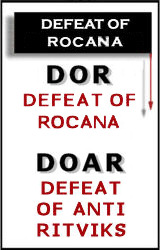
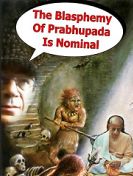
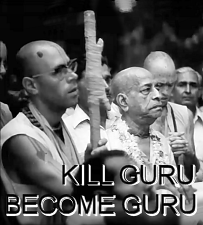
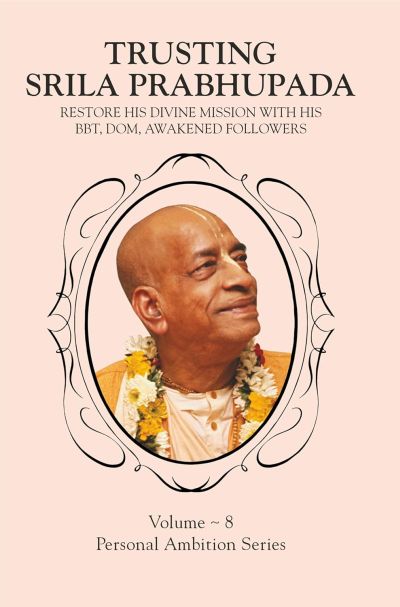
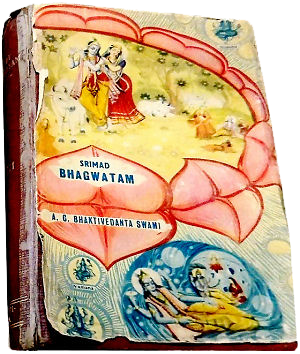
Speak Your Mind